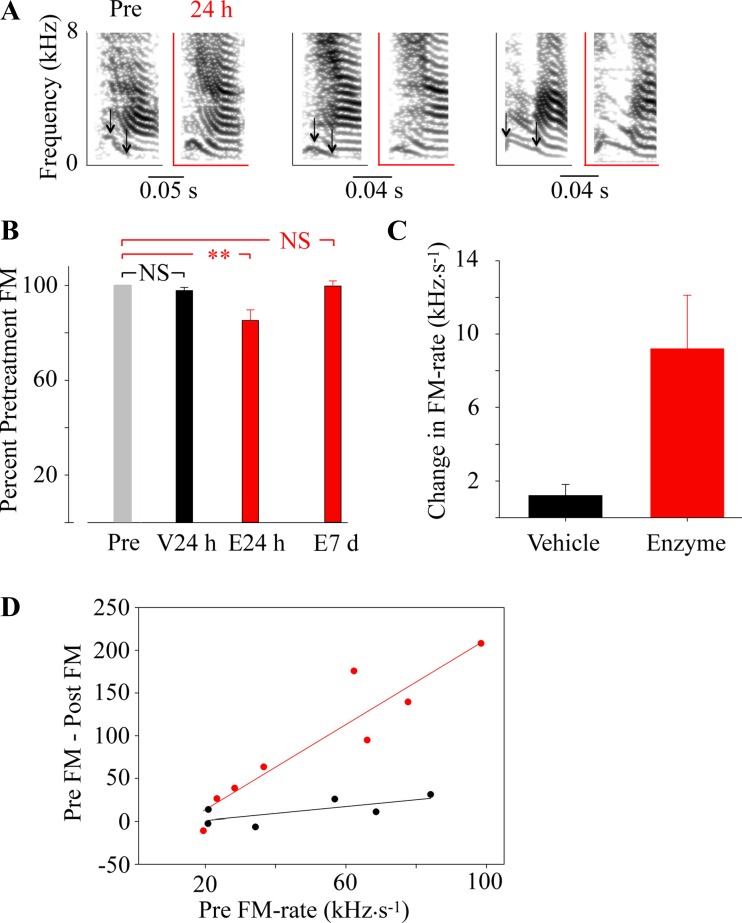Fig. 6.
Frequency modulation (FM) is altered after heparitinase treatment in a syllable-specific pattern. A: 3 specific examples of syllables that were assessed for changes in FM by measuring the change in frequency over time measured through an area of greatest modulation, as marked by the black arrows. Recordings 24 h after enzyme treatment are indicated with red axes. B: enzyme treatment resulted in a significant decrease in FM rates 24 h after injection (E24 h; Student's t-test, P < 0.01), but this decrease was no longer present 7 days after injection (E7 d). FM rates were unchanged 24 h after vehicle injection (V24 h) relative to pretreatment levels. **P < 0.005. C: enzyme-treated birds showed a mean change in FM of 9.2 ± 2.9 kHz/s compared with pretreatment values (Student's t-test, P < 0.05). Vehicle treatment was not significantly different from pretreatment measurements (1.2 ± 0.6 kHz/s). Data are presented as means ± SE, n = 6 for vehicle, n = 8 for enzyme-treated birds. D: in birds treated with enzyme (red), the change in FM rate (Pre FM − Post FM) was larger with increasing pretreatment FM rate (linear regression, P = 0.0007; r2 = 0.87), whereas the regression was not significant for (P = 0.114; r2 = 0.5) in the animals treated with vehicle (black).

